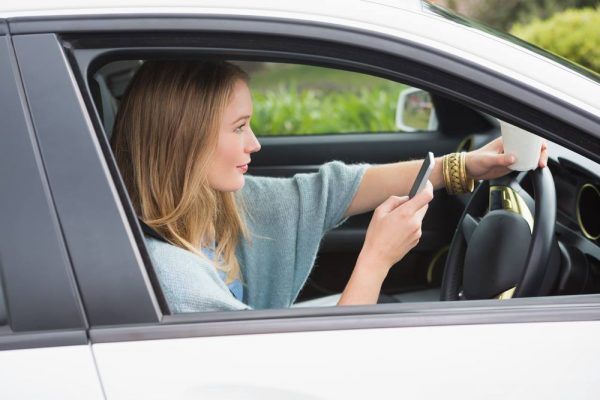Now you can tell all the other bad drivers on the road what they should be doing.
Looking much further ahead
Looking further ahead is one of the main tricks to reducing fuel consumption as it evens out your speed. Fixating on the car in front means that it’s impossible to see what’s happening further up the road, and that means you’ll just be reacting at the last minute to hazards. Advanced drivers look 12 seconds ahead (or as far as they can if it’s not 12 seconds). Twelve seconds means around 300m at 60mph. If you spot traffic backing up ahead you can lift off the accelerator and brake smoothly and gently which will save your brakes from excessive wear.
Avoiding weaving and unnecessary lane changing
When you weave in and out of traffic you end up accelerating and braking a lot more, and it’s unlikely you’ll make much significant progress if traffic is heavy. Perhaps you might get home 30 seconds earlier. In heavier traffic, lanes often move at very similar speeds and if everyone stayed in their lane rather than weaving, traffic would flow much more smoothly because the flow is not disrupted.
Here’s how traffic jams form:
Controlling your speed
The video above also talks about speed control. This is becoming more and more difficult with cars that get ever quieter because the audible cue of a change in engine note as speed changes just isn’t there anymore. If you’re constantly speeding up and slowing down you’re using more fuel than necessary because you’re accelerating a lot, even if it’s not harsh acceleration. The best fuel economy is when you maintain a steady speed.
A driver ahead that speeds up where it’s possible to overtake and then slows down where it’s not is also very frustrating for other drivers.
Not matching your speed to other traffic causes drivers to have to brake on motorways when you merge on the slip road.
Improving your vision and visibility of the road
Set your mirrors correctly to eliminate blind spots and keep your windows (or visor) clean to avoid sun strike – the kind of blinding diffraction that a setting or rising sun causes.
Now that your mirrors are set correctly you should be checking them frequently.
Stopping if you feel sleepy
Driving fatigued is a major cause of accidents because you run the risk of falling asleep at the wheel. When you’re tired, your reactions are slower, too. If you feel tired, you can either swap drivers or simply pull over and have a 20-minute power nap.
Anticipating other drivers’ actions
There are a few things you can look out for to help you anticipate what another driver is going to do.
Dealing with your distractions
The biggest distraction follows us around in our pockets: our phone. The best thing to do is switch it off, but at minimum you should connect it via Bluetooth or put your headphones in so that you can operate it hands-free.

Using a mobile phone increases your risk of having an accident
Maintaining your knowledge of the Highway Code
It’s simple and free to do it right here. You can try a free mock Highway Code test to check your knowledge. Rules change every so often, and we forget the rules. Keeping your knowledge fresh of the Highway Code means you can read the road effectively, and you’ll reduce the risk of getting a fine through doing something you’d forgotten was illegal.
